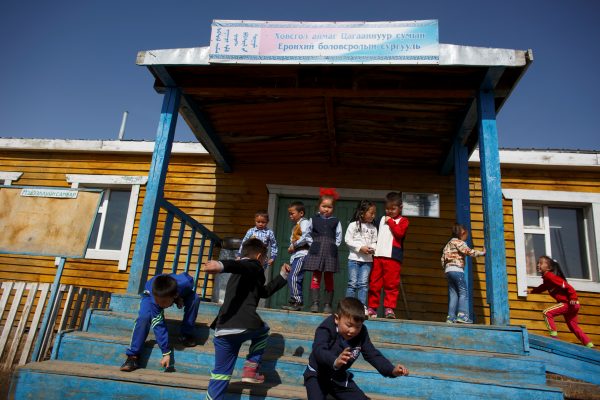In a seemingly paradoxical contrast, Mongolia has the highest number of universities per capita, with 88 higher education institutions (HEIs) for a population of three million. University enrolment rates are almost on par with the European gross enrolment rate of 73 per cent. The number of research degree students also tripled between 2000 and 2018, giving Mongolia one of the largest numbers of doctoral students per 1000 people. This suggests that Mongolia has a decent amount of human resources in the research and development (R&D) sector.
Yet the country lacks research capacity and high-skilled workers. Expanded higher education is critical to improving national research capacity. So why does a country with so many university graduates lack highly skilled workers?
This paradox of increasing institutional capacity but stagnating human resources stems from conflicting ambitions in higher education reform. Since the 1990s, international organisations and outside advisors have pushed neoliberal reforms upon Mongolian policymakers. This has included enabling privatised higher education, while also cutting the overall share of GDP and public expenditure devoted to higher education.
Mongolia is one of the few countries globally that allocates minimal share of their budget to higher education. As a result, Mongolia’s higher education sector is primarily financed by student tuition fees. Only 0.1 per cent of the country’s GDP has been spent on R&D, much lower than the OECD average of 2.68 per cent. The Mongolian government’s minimal investment in physical capital has resulted in low levels of research capacity.
Improving the governance of state universities is at the core of Mongolia’s efforts to reform its higher education sector. By the mid-1990s, in order to make its state-run universities autonomous and self-sufficient, Mongolia adopted a form of university governance similar to that of the United States.
But state universities have not achieved this much-desired autonomy due to ruling parties’ diverging interests and short-term political reversals. Political interference and micro-politics at state universities have adversely affected the leadership, human resources and overall performance of higher education. Academic merit as a key consideration in hiring and promoting has been replaced with political patronage and nepotism. Competent scholars who disagreed with the corrupt system went abroad, reducing a critical talent pool.
Reforms have been aimed at the unification of teaching and research in universities. But the existing system is still Soviet in structure. Research was not an integral part of an academic’s responsibilities until the 1990s. During the Cold War there was an Academy of Sciences which was responsible for conducting research. Even though many HEIs in Mongolia claim that they are research universities, most retain strong teaching and weak research functions.
Research culture in Mongolian universities requires significant attention for the sake of sustainable research development. This cultural shift requires new competencies and attitudinal changes in managing research.
Curiously, the modern-day Academy of Science does not have a research output stronger than that of universities. For example, the five major public universities’ publications are more numerous than those authored by researchers affiliated with the Academy of Sciences. In 2018–2021, universities published over 50 per cent more pieces on the Web of Science than the Academy of Sciences.
This raises another question. Why is Mongolia’s most prominent research institution receiving the country’s biggest share of the research budget when its research profile is lower than universities’?
Conflicting ambitions in higher education reform have resulted in the increasing quantity but decreasing quality of the country’s research capacity. The country’s research capacity is built on multiple elements, including adequate funding, training and availability of research staff, systems to retain people in R&D activities, an expanded higher education system and research culture. Although Mongolia has expanded higher education, established local research training and has a good number of R&D personnel, these factors are not sufficient to build research capacity. Mongolia lacks other essential factors including good governance, rigorous research culture and adequate funding.
The Mongolian government declared its commitment to ‘Vision–2050’, a long-term plan for national development. This should position its research intensive universities to lead the nation with knowledge and expertise in the long-term. But to make it a reality, the government needs to enact consistent policy and legislation, grant autonomy to state universities, unite the state universities and Academy of Sciences and allocate adequate funding to R&D.
To this end, the Asian Development Bank’s proposed project, the Research University Development Project in Mongolia, is expected to build the research capacity of the country. The project will strengthen collaboration between six key state-owned universities, public research institutes and industry. Enhancing interdisciplinary graduate education and research, technology transfer and commercialisation will serve as the foundation for developing research universities. Hopefully this will cultivate more highly skilled workers and elevate the research capacity in Mongolia.
Orkhon Gantogtokh is a PhD student and fellow of the Institute of Asian Research at the University of British Columbia.


Very important topic and more Mongolians should pay more attention to.